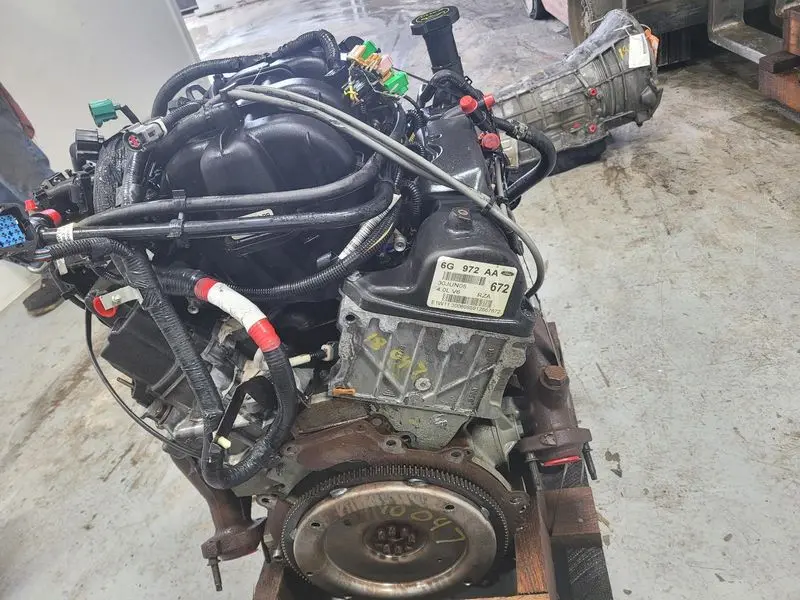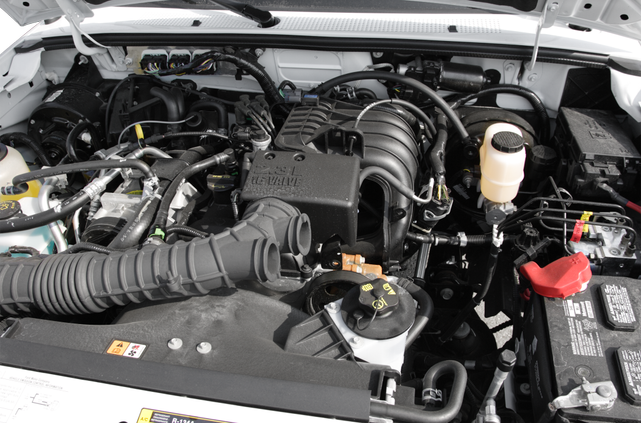Why the 2.2 Ford Ranger Engine Is a Popular Choice for Rugged and Reliable Performance
Why the 2.2 Ford Ranger Engine Is a Popular Choice for Rugged and Reliable Performance
Blog Article
Understanding the Essentials of Automobile Engines: Functions, features, and types

Overview of Car Engines
An auto engine works as the heart of a lorry, transforming gas into mechanical energy to drive it onward. This complex system comprises numerous components that work in unison to make certain optimum efficiency and efficiency. The essential operation of an auto engine entails the interior combustion process, where gas and air are mixed, fired up, and expelled to produce power.
The engine's layout can considerably influence its performance, gas performance, and emissions. Secret components consist of the cylinder block, pistons, crankshaft, and camshaft, each playing a vital duty in the engine's general function.
Along with these elements, engines commonly make use of various systems such as fuel shot, ignition, and cooling down systems to boost efficiency and longevity. Recognizing the standard mechanics of vehicle engines is vital for executing and detecting issues maintenance, inevitably contributing to the automobile's reliability and effectiveness over time.

Types of Automobile Engines
Car engines can be categorized right into numerous types based upon their layout, gas kind, and functional principles. 2.2 ford ranger engine. One of the most typical categories consist of interior burning engines (ICE), electrical engines, and crossbreed engines
Interior burning engines, which can be additional divided into fuel and diesel motor, run by igniting a fuel-air combination to create power. Gasoline engines are typically lighter and smoother, while diesel engines are a lot more fuel-efficient and deal better torque.
Electric engines utilize electrical power kept in batteries to power an electrical motor, giving instantaneous torque and absolutely no exhausts throughout procedure. As modern technology advances, electrical lorries (EVs) are progressively coming to be prominent for their environmental advantages and reduced running expenses.
Hybrid engines incorporate aspects of both interior combustion and electrical engines, enabling for versatile power resources and improved gas effectiveness. They can run in various modes, using either the gasoline engine, the electric motor, or both concurrently.
Each sort of engine has distinctive benefits and negative aspects, influencing their application in various automobile kinds and market sectors, from portable vehicles to sturdy trucks. Recognizing these kinds is necessary for making informed choices concerning lorry option and performance assumptions.
Engine Features Clarified
Comprehending engine functions is crucial for comprehending how cars operate successfully. At the core of any type of interior combustion engine exists the basic procedure of converting gas right into mechanical energy.
The ignition occurs following, stiring up the combination and developing a rapid expansion of gases. This force drives the piston down during the power stroke, which eventually converts right into the rotational motion of the crankshaft. The exhaust stroke after that expels the invested gases from the chamber, giving way for a new cycle to start.
In enhancement to these primary features, engines likewise incorporate systems that manage cooling and lubrication, ensuring ideal Learn More functional temperature levels and minimizing rubbing in between moving parts. This complex interaction of functions allows the engine to generate the power needed for car propulsion while keeping efficiency and integrity. Recognizing these functions offers beneficial understanding into the intricacies of auto engineering and improves the capacity to detect and attend to engine-related concerns properly.
Key Engine Functions
Engine design incorporates numerous essential attributes that considerably affect efficiency, sturdiness, and efficiency. Among one of the most important elements is the engine arrangement, that includes inline, V-type, and flat styles. Each setup impacts the engine's power, dimension, and balance output, thereby influencing overall car dynamics.
One more important attribute is the engine displacement, describing the total volume of all cyndrical tubes. Larger variations generally generate more power yet may compromise gas performance. Engine materials also play a crucial role; lightweight and high-strength products, such as light weight aluminum and magnesium alloys, improve performance without adding too much weight.
The kind of gas shot system utilized-- such as multi-port or direct injection-- impacts combustion effectiveness and exhausts. Turbocharging and supercharging are attributes that increase engine performance forcibly additional air right into the burning chamber, enhancing power result without dramatically enhancing engine size.
Last but not least, the visibility of sophisticated engine management systems maximizes fuel-air mixture and ignition timing, adding to smoother procedure and much better fuel economic situation. Collectively, these attributes specify an engine's capabilities, establishing the structure for its efficiency and longevity in a competitive vehicle landscape.
Maintenance Tips for Engines
Appropriate engine maintenance see here is critical for making sure optimal efficiency and durability, as overlooking regular care can bring about substantial problems down the line. To preserve your engine successfully, begin with normal oil adjustments, generally every 3,000 to 7,500 miles, depending upon the kind of oil made use of. Fresh oil lubes engine components, reducing rubbing and wear.
Additionally, checking coolant degrees is important to stop getting too hot. Guarantee that the coolant is covered up and remains in good condition to keep reliable temperature regulation. Frequently replace and check air and gas filters, as stopped up filters can impede airflow and gas delivery, jeopardizing engine effectiveness.
Additionally, take note of spark plugs and ignition systems. Used or defective ignition system can cause misfiring and decreased performance. Examining the battery terminals and connections for corrosion is likewise important, as a weak battery can influence engine beginning.

Conclusion
In recap, a comprehensive understanding of car engines includes various types, functions, and key functions that dramatically influence lorry performance. Inner burning engines, together with hybrid and electric choices, demonstrate varied systems for power conversion. 2.2 ford ranger engine. Identifying the essential functions, such as consumption and exhaust cycles, along with vital engine attributes like configuration and gas injection systems, furnishes car owners with the understanding essential for reliable upkeep and procedure, eventually boosting automobile longevity and effectiveness
An auto engine serves as the heart go right here of a vehicle, converting fuel into mechanical power to thrust it onward. The basic operation of a car engine entails the interior burning process, where gas and air are blended, sparked, and expelled to produce power.
Frequently change and check air and gas filters, as clogged up filters can hinder air movement and gas shipment, compromising engine performance. - 2.2 ford ranger engine
In summary, a comprehensive understanding of car engines encompasses various kinds, functions, and essential functions that considerably affect vehicle efficiency. Acknowledging the important functions, such as consumption and exhaust cycles, together with vital engine attributes like arrangement and gas shot systems, outfits automobile proprietors with the knowledge required for efficient maintenance and procedure, ultimately improving vehicle durability and efficiency.
Report this page